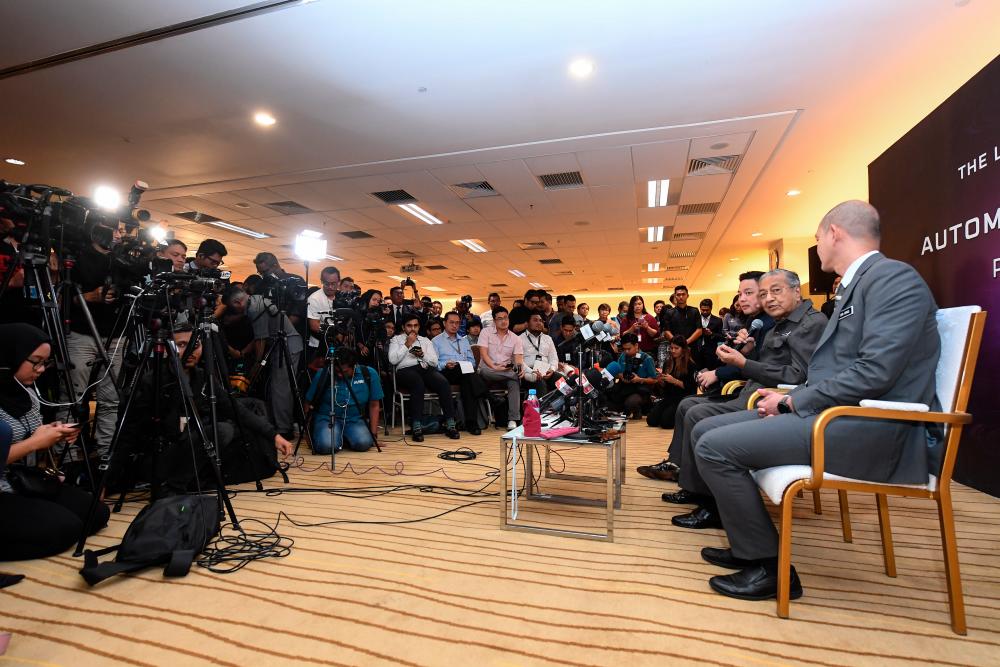KUALA LUMPUR: Four roadmaps and three blueprints have been established under the National Automotive Policy 2020 (NAP 2020) to enhance the existing six NAP 2014 roadmaps.
The latest NAP 2020 roadmaps are: National Roadmap for Automotive & Mobile Value Chain (NRAMVC), National Roadmap for Automotive & Mobility Technology (NRAMT), National Roadmap for Automotive & Mobility Talent (NRAMTa) and National Roadmap for Automotive Aftermarket (NRAA).
The blueprints are: National Blueprint for Automotive Mobility as a Service (NBAMaaS), National Blueprint for Automotive Robotics (NBAR) and National Blueprint for Automotive Internet of Things (IoT) (NBAIoT).
According to the NAP 2020 booklet released by the Ministry of International Trade and Industry today, NRAMVC aims to develop and enhance the competitiveness of component suppliers to the automotive and mobility value chain regionally and globally.
The NRAMVC also outlines additional measures to enhance value-added activities in quality management, operations and business management, as well as product manufacturing and testing capabilities with the application and implementation of Industrial Revolution 4.0 (IR4.0) elements.
"This roadmap will assist the development of parts and components suppliers in Malaysia with the integration and implementation of informative technologies and smart manufacturing that will enable flexibility in physical processes," it said.
Additionally, NRAMT charts the way forward for related technology development in Energy Efficient Vehicle (EEV), Next Generation Vehicle (NxGV), smart mobility, IoT infrastructure and IR4.0 that support the development and manufacture of the automotive product and mobility ecosystem.
The NRAMTa outlines improved plans for the development of a competitive workforce to industry demand at all levels of manufacturing, marketing and automotive services up to the integration of the mobility ecosystem.
This roadmap focuses on improving the quality of existing programmes for technicians and operators at local training institutions.
NRAMTa also includes plans to develop specific local talent in identified fields, and upgrading skills from basic to advanced in engineering and Big Data Analytics, simulation, visualisation, Systems Integrator, Artificial Intelligence (AI) and machine learning.
In addition, improvements in the syllabus for product automation and manufacture of hybrid components, electric motors, engines and transmissions would be done to ensure the availability of a skilled workforce in areas related to IR4.0.
Meanwhile, the NRAA outlines detailed criteria through improvements of remanufacturing, standards and best practices that can be adopted by domestic automotive stakeholders to make Malaysia an automotive remanufacturing hub in Asean.
This roadmap provides guidelines for optimising the quality of recycling and reuse of components by emphasising on digital usage such as Big Data Analytics, that could potentially increase revenue or enhance the effectiveness and efficiency of aftersales operations through customer and vehicle data analysis, maintenance and optimisation of logistics planning.
The NBAMaaS draws core planning of transport services and mobility solutions that are specifically tailored to accommodate the development needs of Malaysia’s automotive industry, while the NBAR outlines strategies in robotic technology towards providing solutions to the issues and challenges, especially in the manufacturing sector.
Through the introduction of Industry 4.0, Malaysia will drive enhanced capabilities in product design, equipment handling, operations, process, supply chain management and factory green energy management by using Robotics Automation technology.
The NBAIoT outlines the direction of the connectivity revolution in the automotive industry and marketing strategies of connected vehicles including Vehicle-to-Everything (V2X), Autonomous vehicles, safety and regulations. — Bernama














